|
Hambledon Vineyard
Part 1 in a series of the rise of English
Sparkling Wine
Website:
www.hambledonvineyard.co.uk
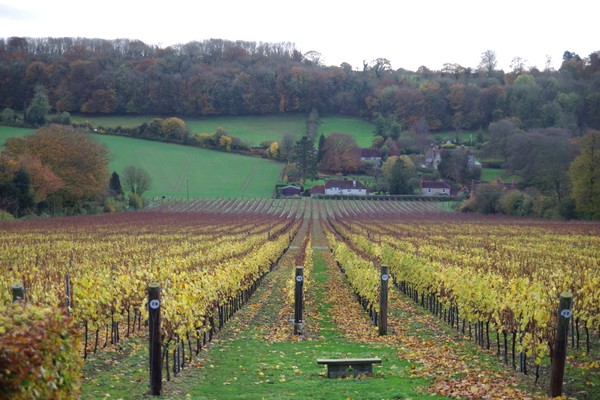
Hambledon is a
pretty place. A small village on the South Downs in Hampshire, it's
the birthplace of that most English of games, cricket. Between 1750
and 1800 the key match in the cricket calendar was Hambledon versus
England! Hambeldon is also the birthplace of the modern English wine
industry. Just over 60 years ago, in 1952, Major General Sir Guy
Salisbury-Jones, who’d been a subaltern in the trenches in World War
1, was sitting at home, looking out over his property with his
stepson, who suggested he should try his hand at growing grape
vines.

The sloping field
with chalky soils in front of his property, Mill Down House, seemed
promising for vines. So Salisbury-Jones took a sack load of the soil
to Burgundy, to get it analysed. This went well, and he came back
with some vines. He also consulted with his friends at the Champagne
house Pol Roger, who gave him some advice. The vineyard was planted
and in 1955 he launched the UK's first commercial wine. For a very
long time, Hambledon was pretty much on its own, but during the late
1960s and 1970s many more vineyards began to spring up, most on a
small hobby/retirement project scale. Things really began to take
off in the 1990s, but the biggest growth has been in the last 15
years, as people have begun to realize the massive potential of
sparkling rather than table wine in the UK.
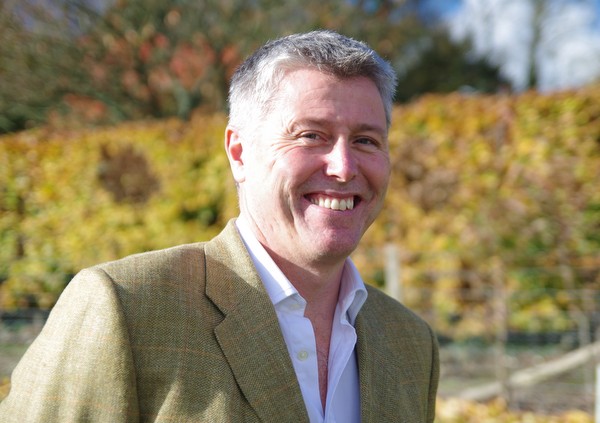
In the mid-1990s
winemaking stopped at Hambledon, just as English wines were
beginning to become more mainstream. Then, in 1999 the property was
purchased by Ian Kellett (above), an ambitious individual
who’d made some money doing equity research on food and drink
businesses in the City, and had then trained in viticulture and
oenology at Plumpton College in Sussex. Kellett believed in the
potential of the site with its favourable climate and chalky soils,
and sunk around £10 million into renovating and replanting vineyards
and building a state of the art gravity flow cellar, aided by Hervé
Jestin, who was for 20 years the cellar master of Champagne Duval
Leroy.
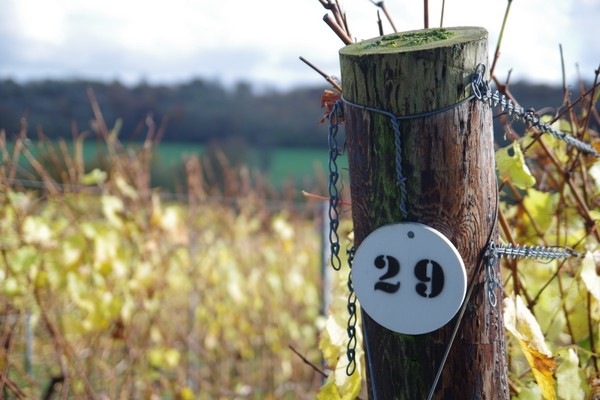
I've visited
twice, and I've been impressed by how serious Kellett is about
making top quality sparkling wine. He has Champagne in his sights as
direct competition. He cites Champagne Pol Roger, with its 1.2
million bottle production, as the model. ‘The plan is during my
lifetime to build an international brand as big as Pol Roger,’ says
Kellett. This is interesting given Pol Roger’s role in helping
establish Hambledon back in the 1950s. He points out that the UK is
the most important market for Champagne in the world, and that a
large part of the growth of Hambledon and other UK producers will
come ‘out of Champagne’s hide.’
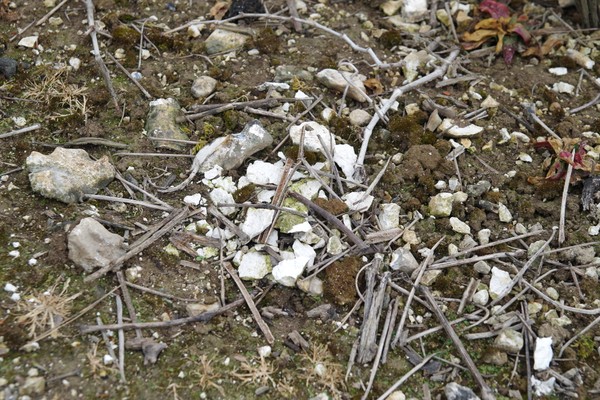
‘In 10 years
there will be 10 million bottles of English sparkling wine going
into cellars each year,’ says Kellett. Within 15 years, he thinks
that there will be three or four producers each with an annual
production of a million bottles each year. ‘We will have at least
three producers making 1 million bottles a year all from their own
vineyards,’ says Kellett. ‘No one does this in Champagne.’ He says
that the capital structure in Champagne, where vineyards are owned
by growers and the vast majority of Champagne is made by houses that
buy grapes in, is a serious weakness for quality. ‘It exposes a soft
underbelly that can be exploited.’ Kellett emphasizes the economics.
To establish a 1 million bottle Champagne estate which grows all its
own fruit would cost around 130 million Euros with today’s vineyard
prices. In the UK, it would cost between 15 and 20 million pounds.
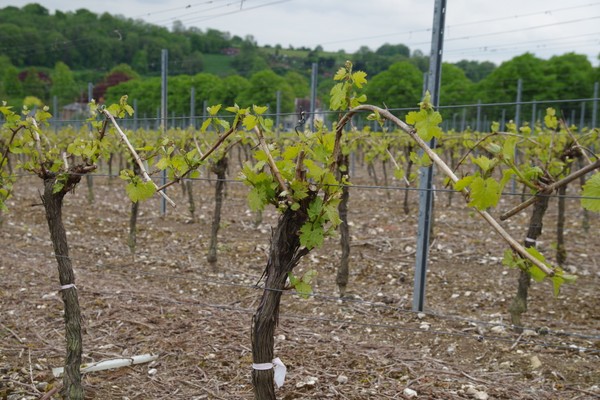
The key to
Kellett's vision is the soils and climate of his vineyard site. Many
of the established sparkling wine producers in England are on green
sandstone, which is very common in Kent and Sussex. Hampshire has
more chalk, and both Hambledon and Meon Valley (a vineyard he
recently acquired) have solid chalk soils. 'In 100 years, Hampshire
will be England's vineyard because of the chalk,' he claims.
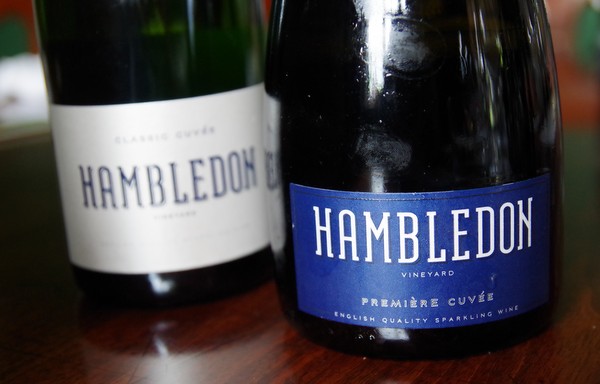
As well as
studying soils, he has looked carefully at climate data for the last
35 years from Reims. In July and August Reims is 1.5 C warmer, but
in September Hambledon is 1.2 C warmer. Interestingly, the Côtes des
Blancs is mostly North-East facing – the coldest exposure. And this
is where Chardonnay is grown. Kellett is convinced his site has
massive potential for Chardonnay. In Champagne the Chardonnay grapes
are getting more expensive.
'There's been a
tendency with English fizz to plant more Pinot Noir than the geology
might suggest,' he says. 'We have planted 75% Chardonnay.' The
Pinots are planted where he thinks the site is best suited for them.
One advantage of Meunier is that it buds later and is therefore more
frost protected. Having said this, Hambledon has half the frost days
of Reims.
After studying
the geology and climate, Kellett began replanting the Hambledon
vineyard in 2004/5, in a test run using 27 clone and rootstock
combinations, with the plant material coming from the same supplier
as in 1952.
Winemaking at Hambledon is
conducted in French. As well as Hervé, who is present for all stages
of winemaking, there's an on-site winemaker Antoine Arnault (from
Reims), and also Didier Pierson from Meon Hill.
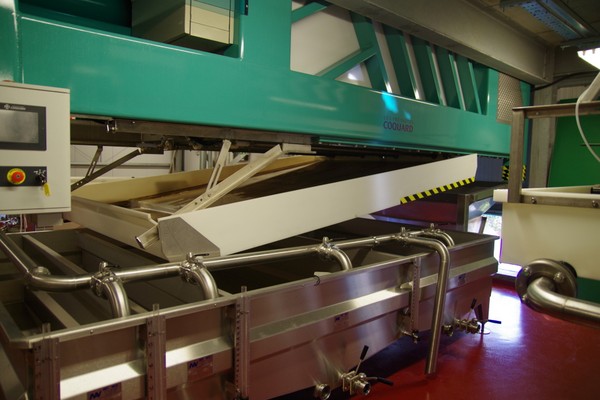
The winery is very
impressive. It's fully gravity flow, over a number of levels, and
there's a lift to take the grapes to the top floor where the crush
pad is located. The presses are state of the art, and this is where
quite a bit of quality can be gained in the winemaking process. 'We
think we are getting a mouthfeel in our wines that is different,'
says Kellett. 'It would be nice if we could demonstrate that this is
because we are not pumping.'

From the start, Hambledon
has been based around a non-vintage model. In 2008 and 2009 they
sold grapes to Camel Valley and Ridgeview. In 2010 they kept the
harvest but used it to start building up reserve wines. In 2014 the
substantially increased size of the vineyard (2011 plantings) came
on stream. As the volume has gone up, there's a need for creating
more reserve wine. New oak is used for 2-3% of the base wines, and
Seguin Moreau barrels steamed before toasting are used.
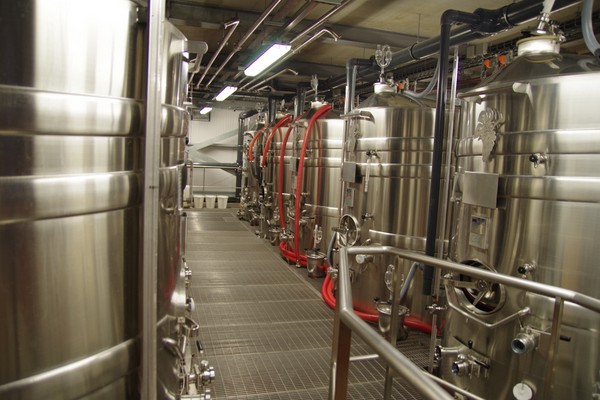
Production in 2014 was 130
000 litres, and in 2015 it will be 250 000. The current vineyard
area is sufficient for 350 000 litres. The business plan was for 10
tons/hectare, and for more than half of the years so far this has
been achieved. The two worst years were 2012 (practically no grapes;
the worst year for 60 years according to weather records), and 2011
where it rained during flowering, resulting in lower yields (6-7
tons/hectare) but good quality. Didier Pierson at Meon Hill got 17.5
tons/hectare in 2010, using the Champenois trellising system – so
this shows what can be achieved. There are
20 hectares planted and 35 more ready to plant.
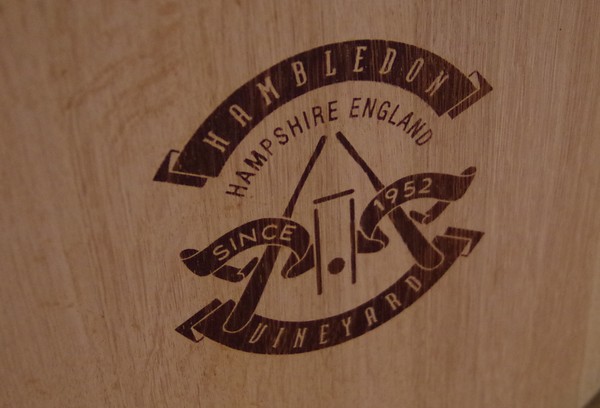
THE WINES
Hambledon Classic Cuvée
NV
Disgorged March 2014 after 20 months on lees, 8 g/l dosage. Very
fine and fresh with pure lemony aromatics and subtle bread/toast
notes. Lively and pure in the mouth with tight citrus fruit, some
toastiness and a hint of herbiness. Lovely precision. 92/100 (10/14)
Hambledon Classic Cuvée
NV
Disgorged in October 2014 after 28 months lees ageing, zero
dosage. Very keen bright citrus fruit with some appley notes. Real
finesse. Incredible purity on the palate and real freshness, with
great length. 92/100 (10/14)
Hambledon Classic Cuvée
NV
Based on 2010/11, zero dosage. Fine, expressive nose. Very lean
and fruity with taut pear and apple fruit. Lovely acid structure
with subtle herby notes. Very expressive with fine toasty notes.
92/100 (05/15)
Hambledon Classic Cuvée
NV
First wine released. Dosage 8 g/litre. Lovely nose of fine
toasty notes, pear and citrus fruit with a hint of apple. Very
precise and taut with a hint of white peach and a keen citrus core.
Amazing finesse with lovely acid structure. So fine. 92/100 (05/15)
Hambledon Première Cuvée
NV
No dosage, 28 months on lees, disgorged October 2014. Very pure
aromatics with fine lemons and herbs. Linear, taut palate with pure,
structured lemony fruit. Currently quite backward and in need of
more time. Amazing length: this will be fabulous. 92-94/100 (10/14)
Hambledon Première Cuvée
NV
Based on 2010/11 with 8 g/litre dosage. Fine, toasty and pure
with lovely freshness. Subtle herbs under the citrus and pear fruit
with a bit of toastiness. So fine with some subtle appley notes.
93/100 (05/15)
See
also:
 A
video introduction to English sparkling wine A
video introduction to English sparkling wine
 Blog
posts on English sparkling wine Blog
posts on English sparkling wine
Wines
tasted 10/14 and 05/15
Find these wines with wine-searcher.com
Back
to top
|

